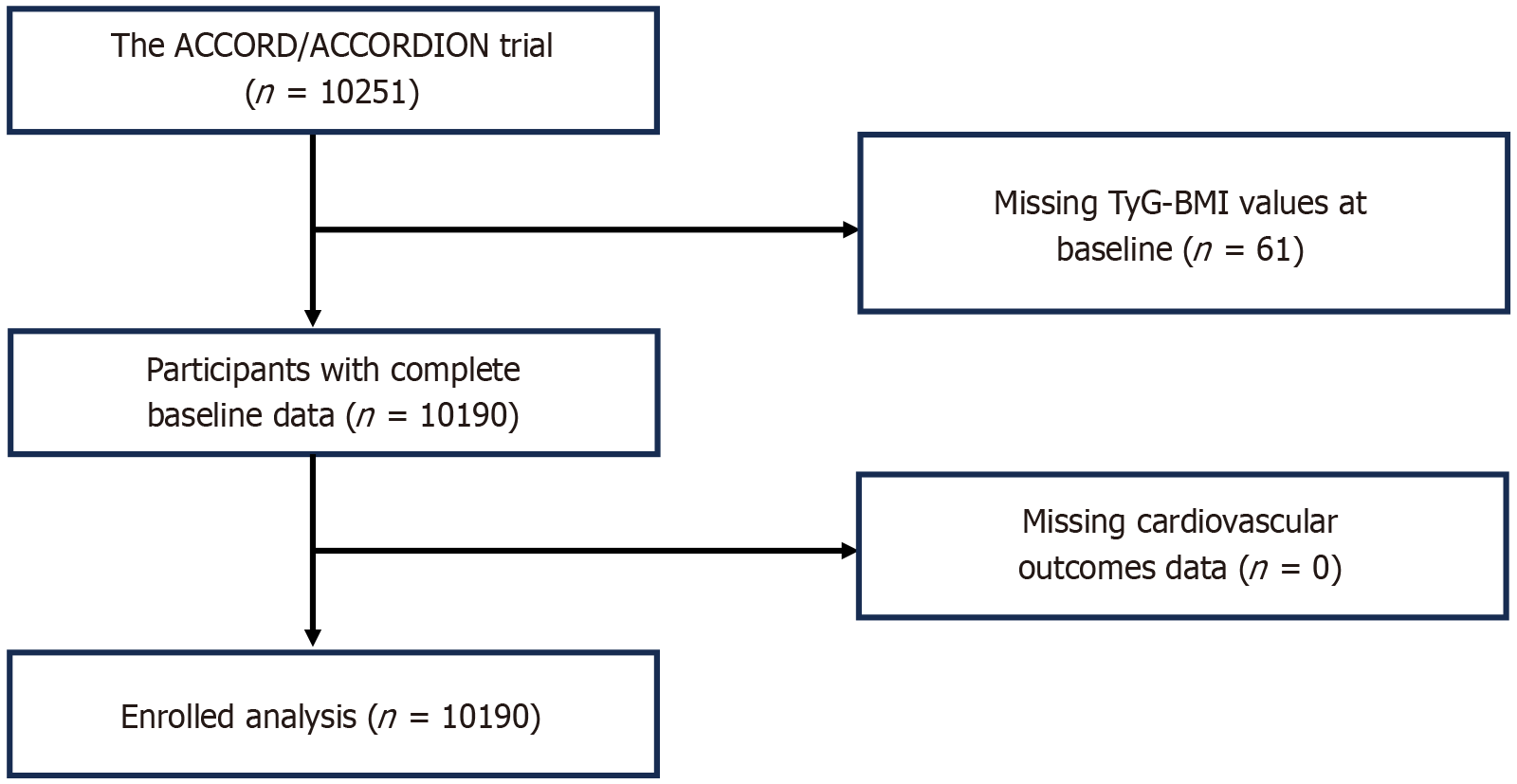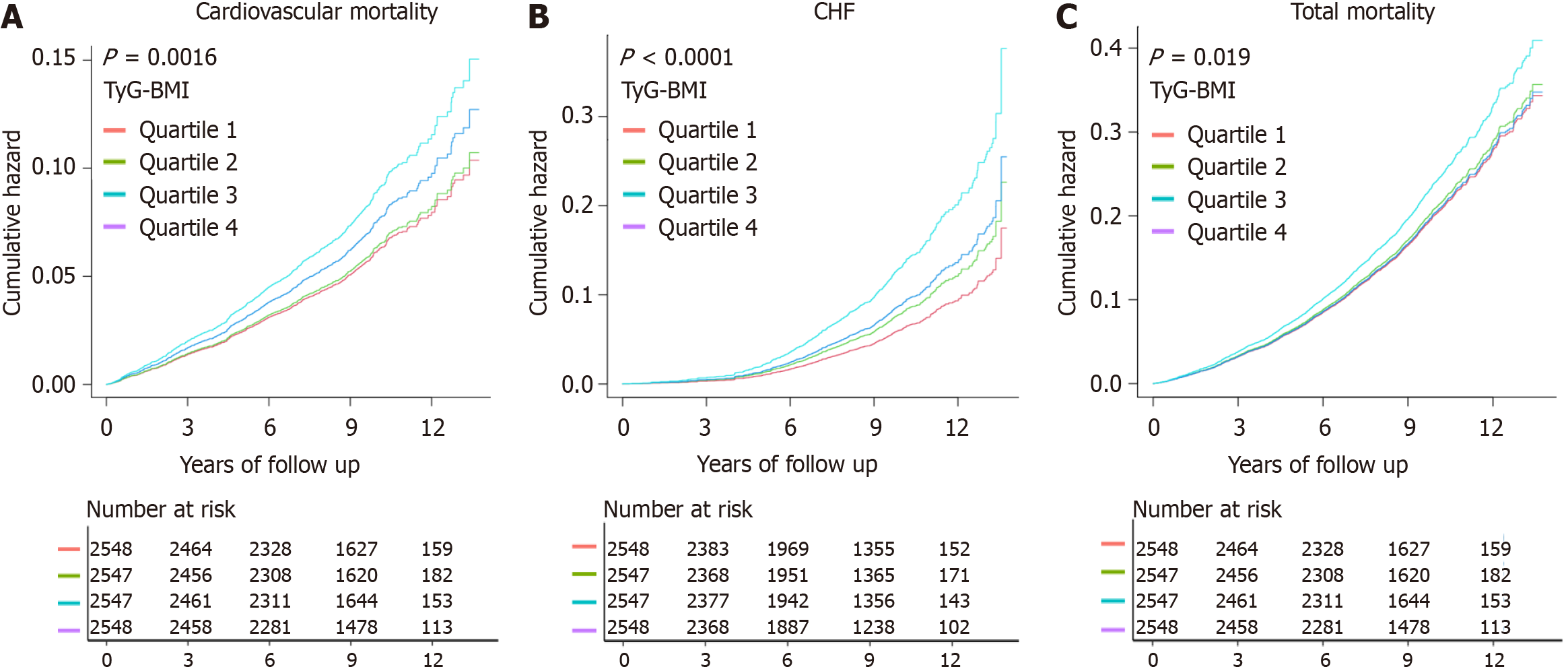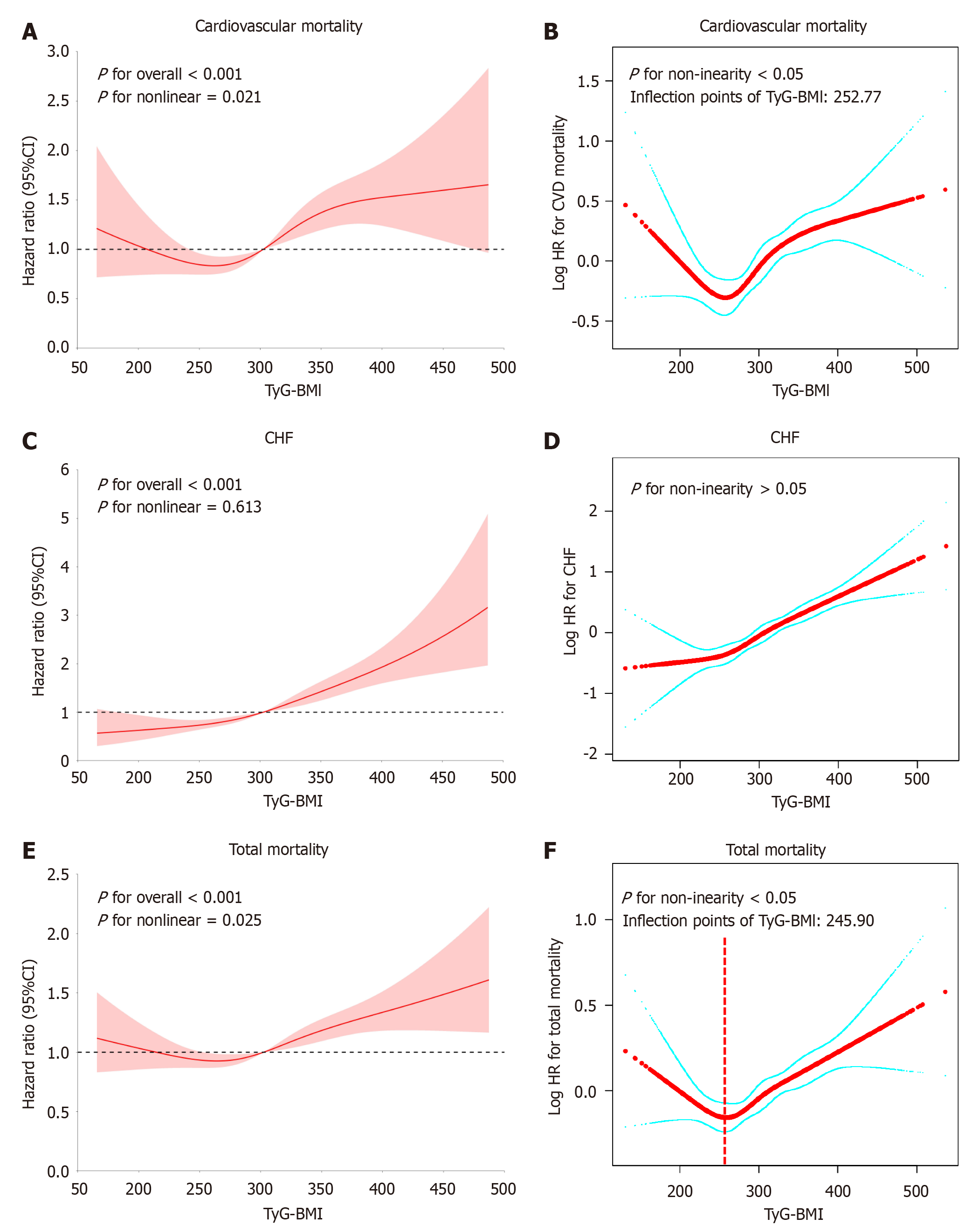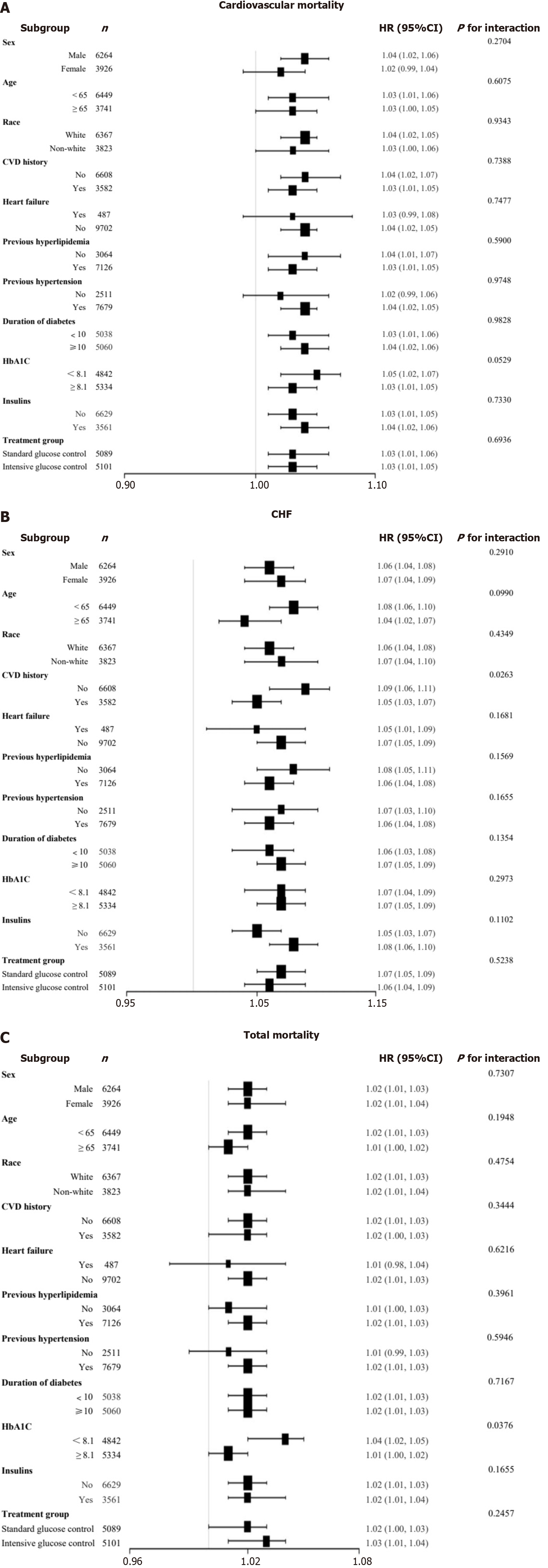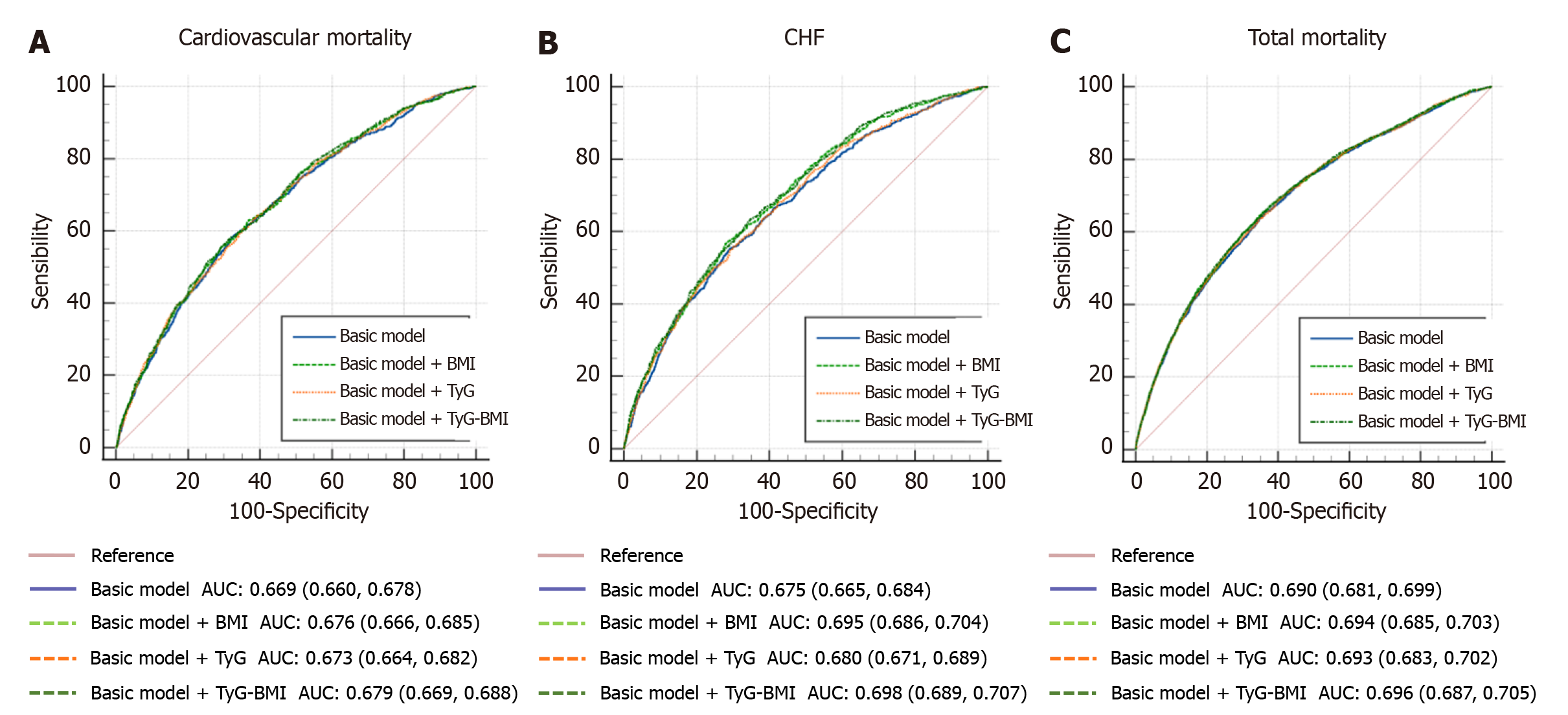Copyright
©The Author(s) 2025.
World J Diabetes. Aug 15, 2025; 16(8): 108839
Published online Aug 15, 2025. doi: 10.4239/wjd.v16.i8.108839
Published online Aug 15, 2025. doi: 10.4239/wjd.v16.i8.108839
Figure 1 Study participant selection from the ACCORD/ACCORDION study.
TyG: Triglyceride glucose; BMI: Body mass index.
Figure 2 Kaplan-Meier curves for cardiovascular outcomes and total mortality with triglyceride glucose-body mass index.
A: Cardiovascular mortality; B: Congestive heart failure; C: Total mortality. TyG: Triglyceride glucose; BMI: Body mass index; CHF: Congestive heart failure.
Figure 3 Restricted cubic spline and smooth curve fitting analyses were performed to assess the relationship between triglyceride glucose-body mass index and the risk of cardiovascular outcomes and total mortality.
A and B: Cardiovascular mortality; C and D: Congestive heart failure; E and F: Total mortality. The hazard ratios shown are adjusted for Model 3, including sex, race, age, education, history of cardiovascular disease, previous hypertension, previous hyperlipidemia, diastolic blood pressure, systolic blood pressure, duration of diabetes, proteinuria, heart failure, smoking status, glycated hemoglobin, total cholesterol, low density lipoprotein-cholesterol, estimated glomerular filtration rate, calcium channel blocker, beta-blockers, biguanides, thiazolidinediones, insulin, aspirin, cholesterol absorption inhibitors. TyG: Triglyceride glucose; BMI: Body mass index; CHF: Congestive heart failure; CVD: Cardiovascular disease.
Figure 4 Subgroup and interaction analyses were conducted to examine the relationship between triglyceride glucose-body mass index and the risks of cardiovascular outcomes and total mortality.
A: Cardiovascular mortality; B: Congestive heart failure; C: Total mortality. CVD: Cardiovascular disease; HbA1c: Glycated hemoglobin.
Figure 5 Receiver-operating characteristic analysis for cardiovascular outcomes and total mortality.
A: Cardiovascular mortality; B: Congestive heart failure; C: Total mortality. The conventional model + triglyceride glucose (TyG)-body mass index (BMI) included clinically recognized cardiovascular risk factors (sex, age, education, smoking status, duration of diabetes, previous hypertension, previous hyperlipidemia, diastolic blood pressure, systolic blood pressure, proteinuria, depression, fasting plasma glucose, glycated hemoglobin, low density lipoprotein-cholesterol) along with TyG-BMI levels, while the conventional model included only the standard cardiovascular risk factors. TyG: Triglyceride glucose; BMI: Body mass index; CHF: Congestive heart failure; AUC: Area under the receiver-operating characteristic curve.
- Citation: Liu MJ, Xiang SM, Hu XQ. Triglyceride glucose-body mass index is associated with cardiovascular outcomes and overall mortality in type-2 diabetes mellitus patients. World J Diabetes 2025; 16(8): 108839
- URL: https://www.wjgnet.com/1948-9358/full/v16/i8/108839.htm
- DOI: https://dx.doi.org/10.4239/wjd.v16.i8.108839













